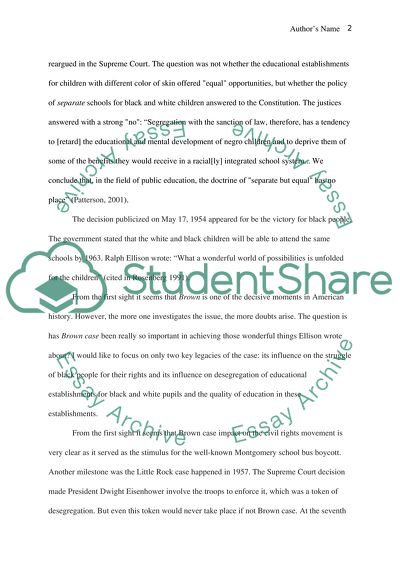Cite this document
(Brown v. Board of Education Case Study Example | Topics and Well Written Essays - 2000 words - 1, n.d.)
Brown v. Board of Education Case Study Example | Topics and Well Written Essays - 2000 words - 1. Retrieved from https://studentshare.org/law/1751597-brown-v-board-of-education
Brown v. Board of Education Case Study Example | Topics and Well Written Essays - 2000 words - 1. Retrieved from https://studentshare.org/law/1751597-brown-v-board-of-education
(Brown V. Board of Education Case Study Example | Topics and Well Written Essays - 2000 Words - 1)
Brown V. Board of Education Case Study Example | Topics and Well Written Essays - 2000 Words - 1. https://studentshare.org/law/1751597-brown-v-board-of-education.
Brown V. Board of Education Case Study Example | Topics and Well Written Essays - 2000 Words - 1. https://studentshare.org/law/1751597-brown-v-board-of-education.
“Brown V. Board of Education Case Study Example | Topics and Well Written Essays - 2000 Words - 1”. https://studentshare.org/law/1751597-brown-v-board-of-education.


